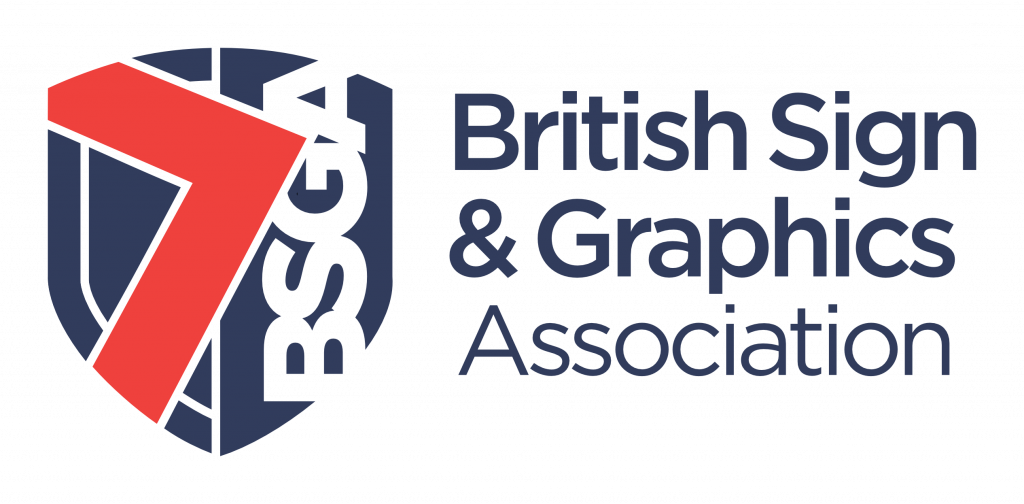By Craig Brown, chairman of the BSGA, with insights from Sign Trade Supplies and PIVOT365
In retail, first impressions aren’t just important – they’re business-critical. Your shopfront signage is often the first thing customers notice, long before they step through the door. A bright, clean, well-maintained sign sends a clear signal of professionalism. But a faded logo, flickering lights, or cracked panel can damage trust before you’ve even had a chance to engage.
“Signage tells customers who you are before they even step inside,” says Garrick Dartnell, Head of Marketing at Sign Trade Supplies. “It’s your 24/7 salesperson; it needs to be safe, clean, and visible.”
Retailers often focus on new fit-outs or promotional graphics, but overlook the basics: maintenance. With budgets stretched and staff time limited, it’s easy to let routine checks slip. But as Signage Safety Expert, Ben Lambert from PIVOT365 warns, “Too often, maintenance is treated as optional. But it’s essential – for safety, compliance, and brand integrity.”
A study by FedEx Office found that 76% of consumers have entered a store purely based on its signage. Two-thirds said signage had influenced a purchase decision, and more than half reported they’d avoid a store with poorly maintained or misspelled signs. The takeaway? Retailers can’t afford to treat signage upkeep as an afterthought.
Safety comes first
Beyond customer perception, there’s a real risk in letting signs deteriorate. From loose fascias on ageing shopfronts to unstable fixings on inherited signs, small issues can quietly escalate into serious hazards. Retail signs are often mounted on older buildings, where underlying structures may not be suited to modern loads. In some cases, new signage is even layered onto previous occupiers’ signs – a shortcut that adds unnecessary weight and stress.
Without proper inspection and maintenance, these signs can pose a danger to staff and the public. “We’ve seen cases where signage fixings have failed during high winds, simply because flashing hadn’t been checked or waterproofing had worn away,” says Dartnell. “A routine inspection would have caught it.”
Under the Town and Country Planning (Control of Advertisements) Regulations, signage must be kept in a clean and safe condition. And while Health and Safety legislation doesn’t mention signage explicitly, employers are required to ensure that their buildings and all attached structures are maintained safely. The grey area doesn’t absolve responsibility.
Maintenance made easy
So what’s the best way forward? For starters, schedule quarterly checks. Look for peeling vinyl, flickering lights, or signs of rust or water ingress. Cleaning should be done using the right products for the sign’s material. The wrong solution can do more harm than good.
If your sign is illuminated, LED retrofits are a smart move. Not only are they more energy-efficient, but LEDs last longer than traditional fluorescent lighting – a cost-saving upgrade in the long term. PIVOT365 offers planned maintenance services that catch issues early and ensure compliance.
“Think of it as insurance for your brand,” says Lambert. “Routine maintenance prevents emergency repairs and protects your investment.”
Ladder safety matters
Of course, inspections and cleaning often require work at height. The BSGA’s Knowledge Hub Series includes new guidance on ladder safety – essential reading for retailers who rely on internal teams or contractors to access signs. Falls from height remain one of the most common causes of workplace injury, and signage work is a frequent culprit.
Key tips include choosing the right ladder, checking it before use, securing it properly, and maintaining three points of contact. Only trained, competent individuals should be working at height, even for simple tasks like changing bulbs. It’s a small detail, but one that can prevent serious injury.
Brand protection starts at the front door
Sign maintenance might not be glamorous, but it’s fundamental. In a climate of increasing costs, it’s tempting to defer small repairs, but that decision often costs more later. A cracked panel or failed LED might seem minor, but together they can chip away at a brand’s reputation.
Retailers have a duty to staff, to the public, and to their brand to ensure signage is safe, secure, and fit for purpose. And with providers like Sign Trade Supplies and PIVOT365 on hand, maintaining your signage estate doesn’t need to be a burden.
For those ready to take the next step, the BSGA’s Knowledge Hub is a growing resource to help retailers and signage professionals raise their game, one sign at a time. Because safe signs make strong brands and smarter business.
